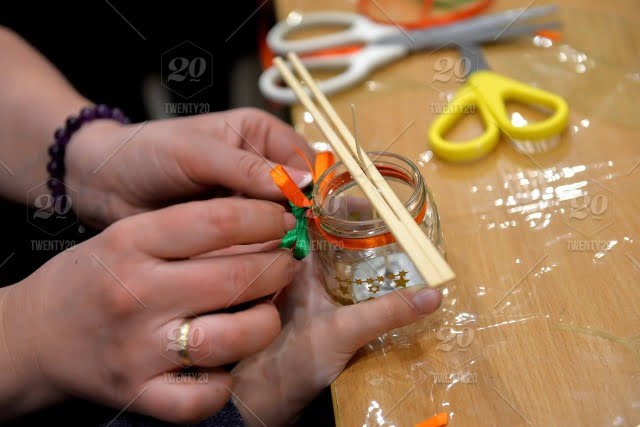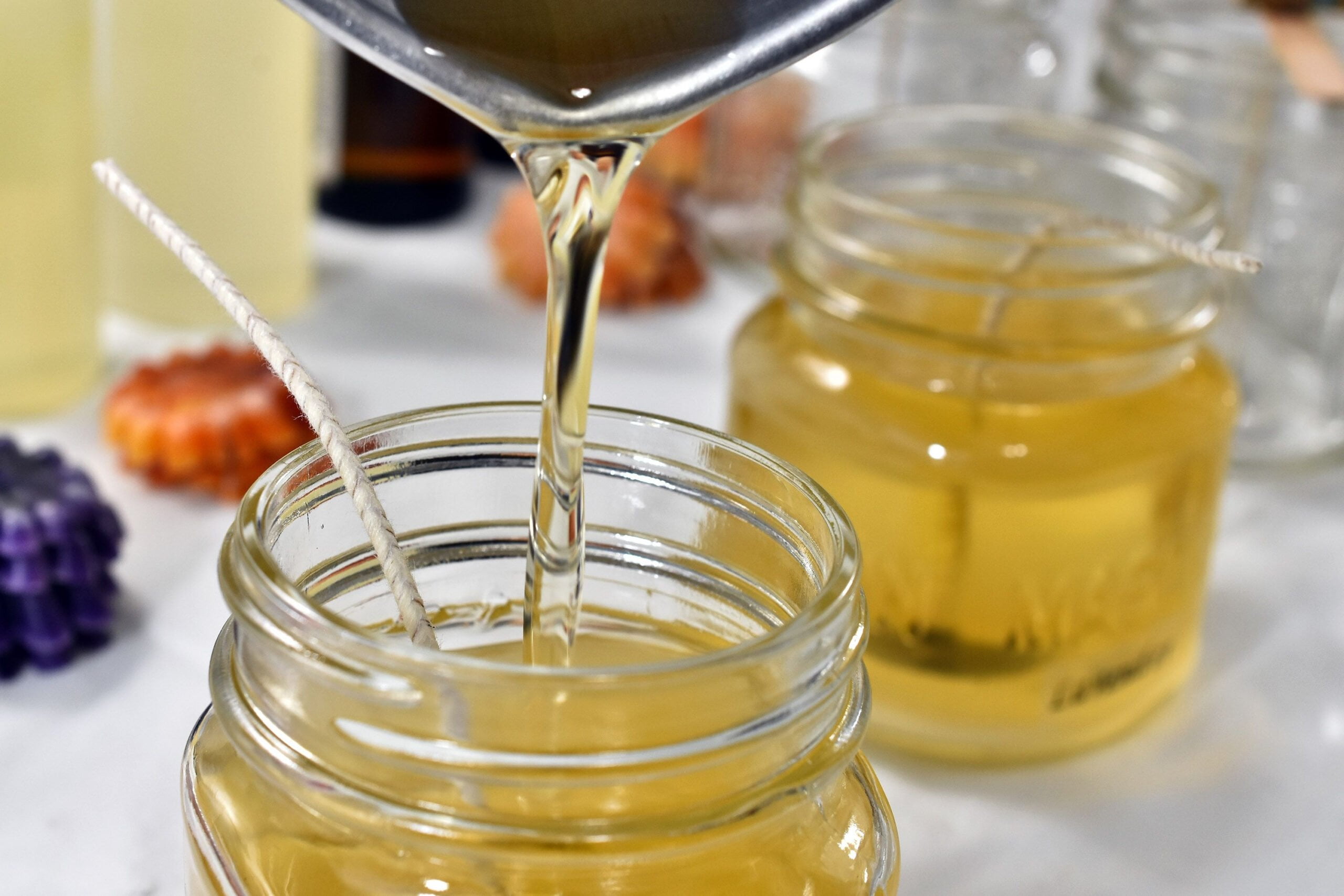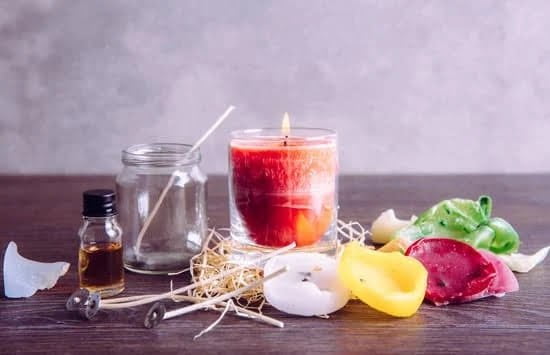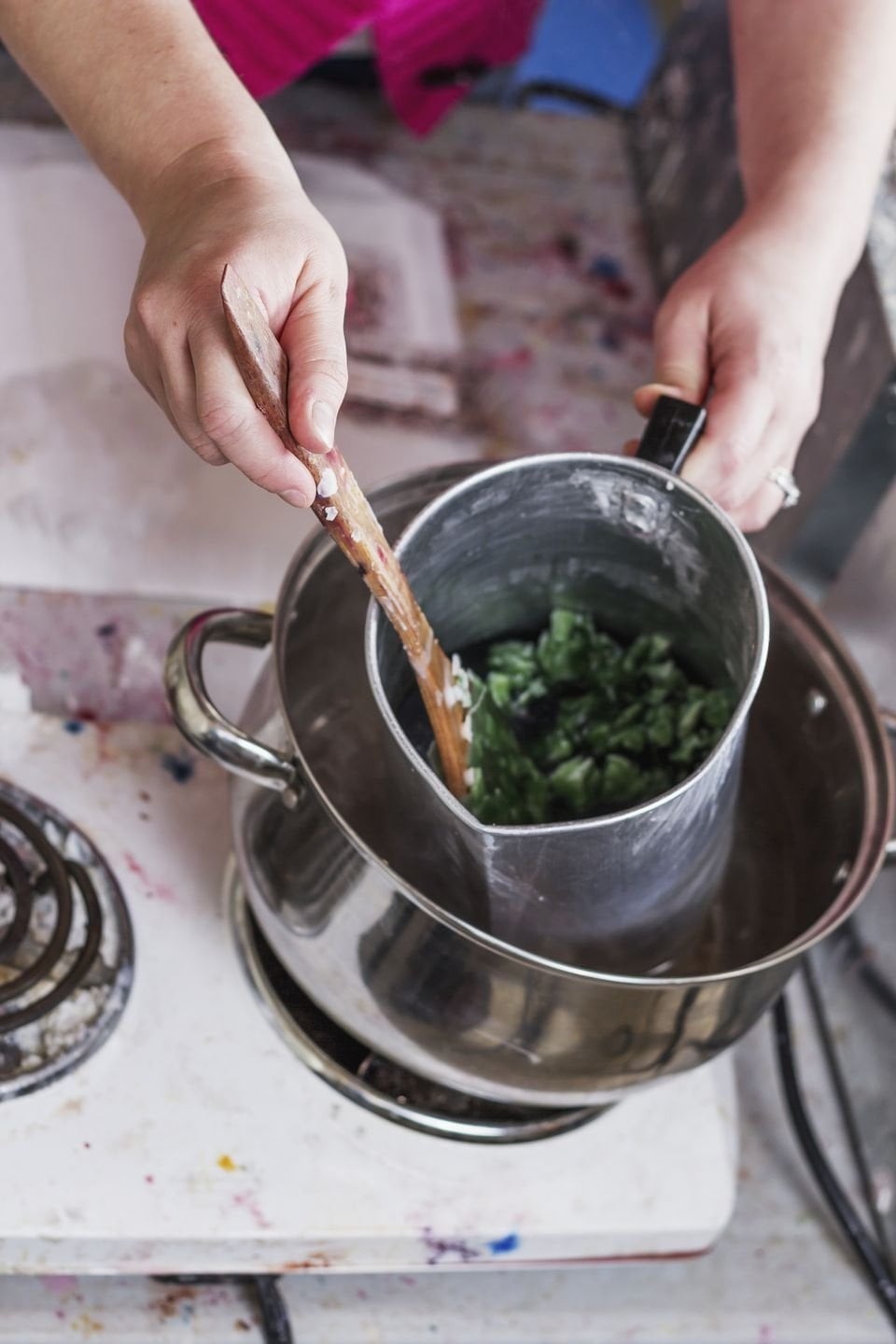Candle making is a centuries-old craft that has evolved from a necessity into an art form. With just a few ingredients and some basic tools, you can create beautiful and fragrant candles right in your own home. Whether you’re a beginner or an experienced candle maker looking to explore new techniques, this article will guide you through the process step by step.
In this comprehensive guide, we will take you on a journey through the world of candle making. We’ll start by explaining the basic ingredients and tools that are essential for this craft. From there, we’ll walk you through the process of setting up your workstation and gathering all the materials you need.
Once you’re acquainted with the basics, we’ll delve into more advanced topics such as selecting the perfect wax for your candles and exploring different fragrance options. You’ll also learn techniques for adding vibrant colors to your candles and creating unique shapes and designs using molds and pouring techniques.
To complete the artistic experience, we’ll show you how to enhance your candles with decorative elements and embeds. And of course, safety is always a top priority, so we’ll provide essential tips and tricks to ensure a safe candle making process.
Finally, we’ll address common issues that may arise during candle making and offer troubleshooting advice to help you achieve perfect results every time. By the end of this article, you’ll be equipped with all the knowledge necessary to unleash your creativity and enjoy the wonderful art of candle making. Let’s get started.
Understanding the Basic Ingredients and Tools Required for Candle Making
In order to successfully make candles, it is important to have a thorough understanding of the basic ingredients and tools involved in the process. This section will provide an overview of the essential components needed for candle making.
1. Wax: The primary ingredient in candles is wax, which serves as the fuel for the flame. There are different types of wax available, including paraffin wax, soy wax, beeswax, and gel wax. Each type has its own unique characteristics and melting points, so it is important to select the right wax for your specific needs.
2. Wicks: Wicks are responsible for carrying the flame and keeping it steady throughout the burning process. They are typically made from braided cotton or a blend of cotton and paper. It is crucial to choose wicks that are properly sized for your candle’s diameter to ensure an even burn.
3. Fragrance Oils and Essential Oils: Adding scent to your candles can create a more enjoyable sensory experience. Fragrance oils are synthetic oils designed specifically for candle making, while essential oils are derived from natural plant materials. When using fragrance oils or essential oils, it is important to follow recommended usage rates to avoid overpowering or compromising the performance of your candles.
4. Colorants: If you want to add color to your candles, there are various options available such as liquid dyes or dye chips specifically formulated for candle making. It is important to use colorants that are compatible with your chosen wax type to achieve vibrant and long-lasting colors.
5. Containers or Molds: Depending on your desired candle shape and design, you will need containers or molds to hold the melted wax. Common options include jars, tins, votive cups, pillar molds, and novelty shapes like silicone molds. Make sure that your chosen containers or molds are heat-resistant and appropriate for your selected wax type.
6. Heat Source: To melt the wax, you will need a heat source. This can be a double boiler, a dedicated wax melter, or even a microwave for certain types of wax. Whichever method you choose, ensure that it is safe and appropriate for your workspace.
7. Thermometer: A reliable thermometer is essential for monitoring the temperature of the melted wax. Maintaining the correct pouring temperature is crucial to achieving optimal results and preventing issues such as tunneling or frosting.
8. Stirring Tools: You will need sturdy stirring tools to mix the wax, fragrance oils, and colorants thoroughly. Wooden spoons, silicone spatulas, or stainless steel utensils are commonly used for this purpose.
By understanding and gathering these basic ingredients and tools, you will be well-prepared to embark on the art of candle making.
Step-by-Step Guide
Candle making can be a fun and rewarding hobby that allows you to create beautiful, customized candles right at home. Before you begin your candle making journey, it’s important to gather all the necessary materials and prepare your workstation for a smooth and enjoyable experience.
Gathering Essential Materials
The first step in preparing your workstation is to gather all the essential materials needed for candle making. Here are some items you will need:
- Wax: Choose the appropriate wax for the type of candle you want to make. Common options include soy wax, beeswax, and paraffin wax.
- Wick: Select a wick that is suitable for the size and type of candle you plan to make. You can choose from various thicknesses and materials, such as cotton or wood.
- Container or Molds: Decide whether you want to make container candles or molded candles. For container candles, choose heat-resistant jars or containers that are appropriate for candle usage. If you prefer molded candles, select molds in different shapes and sizes.
- Double Boiler or Melting Pot: Use a double boiler or a melting pot specifically designed for melting wax safely. Avoid using direct heat sources such as stovetops or microwaves.
- Thermometer: A thermometer is essential for monitoring the temperature of the wax during the melting process.
Preparing Your Workstation
Once you have gathered all your materials, it’s time to set up your workstation properly:
- Clean Surface: Start by clearing a clean surface where you will be working on your candle making project. This could be a table covered with plastic or newspaper to protect it from any spills or drips.
- Heat-Resistant Area: Ensure that your workspace is heat-resistant to prevent any accidents or damage caused by hot wax spills or splatters.
- Ventilation: Work in a well-ventilated area to ensure proper air circulation. This will help dissipate any fumes that may be emitted during the candle making process.
- Protective Gear: It is advisable to wear protective gear such as gloves and an apron to protect yourself from hot wax and potential spills.
Once your workstation is set up and all the essential materials are gathered, you are ready to move on to the next step in candle making – melting the wax. Follow each step carefully, and soon you will have beautifully crafted candles that exude warmth and fragrance in your home.
Unveiling the Secrets of Different Wax Types
When it comes to candle making, the type of wax you choose plays a crucial role in the final outcome of your candle. Different waxes have different properties and characteristics that can affect the burn time, fragrance throw, color saturation, and overall quality of your candles. In this section, we will unveil the secrets of different wax types and provide you with valuable insights to help you select the perfect wax for your candle.
Paraffin Wax
Paraffin wax is one of the most commonly used waxes in candle making due to its affordability and versatility. It has a low melting point, which makes it easy to work with and allows for a smooth pour. Paraffin wax has excellent fragrance throw capabilities, meaning it can release aromas effectively when paired with quality fragrances or essential oils. It also has a longer burn time compared to other waxes, making it suitable for long-lasting candles.
Soy Wax
Soy wax is derived from soybean oil and is known for its eco-friendly properties. It is biodegradable and made from renewable resources, making it an ideal choice for those who prefer environmentally friendly options. Soy wax has a lower melting point than paraffin wax, resulting in slower burning times and cooler flames. It also has great fragrance retention abilities, allowing candles made with soy wax to retain their scent throughout their lifespan.
Beeswax
Beeswax is a natural wax produced by bees and often sought after for its unique qualities. It emits a subtle honey-like aroma when burned and produces a warm, golden glow that adds an elegant touch to any room. Beeswax candles have a longer burn time compared to other waxes due to their high density. They are also known for their natural air-purifying properties, releasing negative ions that clean the air as they burn.
Coconut Wax
Coconut wax is a relatively new addition to the candle making world and has gained popularity for its clean-burning properties. It has a smooth, creamy texture, which allows for excellent fragrance throw and an even burn. Coconut wax candles have a long burning time and can hold a high percentage of fragrance oils or essential oils, resulting in powerful scent diffusion.
Selecting the perfect wax for your candle depends on various factors such as your desired burn time, scent throw, and eco-friendly preferences. Consider experimenting with different waxes to find the one that suits your needs and aligns with your creative vision. Remember to always follow safety guidelines when working with any type of wax and enjoy the process of unleashing your creativity through the art of candle making.
Infuse Your Candle with Fragrance
Understanding Aromatherapy: The Power of Fragrance
Before diving into the world of scented oils and essential oils for candle making, it’s important to understand the role of fragrance in our lives. Fragrance has a powerful effect on our emotions and well-being, and that’s why aromatherapy is widely used for relaxation, stress relief, and mood enhancement. When you infuse your candles with fragrance, you are not only creating a visual delight but also adding an olfactory experience that can emotionally uplift the atmosphere.
Scented Oils vs Essential Oils: What’s the Difference?
When it comes to selecting fragrances for your candles, there are two main options: scented oils and essential oils. Scented oils are synthetic fragrances specially formulated for candle making. They come in a wide range of scents, from sweet floral notes to warm spices or fresh citrus aromas. On the other hand, essential oils are natural plant extracts obtained through various processes such as distillation or cold-pressing. They offer a more subtle and authentic scent experience.
Choosing the Right Fragrance for Your Candle
The process of selecting the perfect fragrance for your candle involves considering various factors such as personal preference, desired mood or ambiance, and compatibility with the chosen wax type. When choosing scented oils or essential oils, it’s important to opt for high-quality options from reputable suppliers to ensure maximum scent throw and longevity. Experimenting with different combinations of fragrances can also create unique blends that reflect your own style and personality.
In summary, infusing your candles with fragrance adds an enchanting dimension to your creations. Whether you choose scented oils or essential oils, carefully select high-quality options that align with your desired ambiance and personal taste. With a world full of delightful aromas at your fingertips, this step will certainly enhance the enjoyment and sensory experience of your homemade candles.
Adding a Touch of Color
Candles not only provide illumination and fragrance, but they can also serve as beautiful and eye-catching decorative pieces. Adding color to your candles can take them to the next level and create a stunning visual impact. In this section, we will explore various techniques and tips for creating vibrant and eye-catching candles.
Choosing the Right Coloring Agents
When it comes to adding color to your candles, you have several options available. The most commonly used coloring agents include liquid dyes, dye chips, powdered pigments, and crayons. Liquid dyes are easy to work with as they blend well with molten wax, while dye chips provide more intense colors in a concentrated form. Powdered pigments offer a wide range of shades but require careful blending with wax before pouring. Crayons are an inexpensive option that can produce rich colors.
Experimenting with Layering Techniques
Layering different colors in your candles can create visually stunning effects. One popular technique is the “gradient” or “ombre” effect, where multiple shades of the same color are layered from light to dark or vice versa. Another technique is “color blocking,” where contrasting solid colors are poured in separate layers to create bold visual contrasts. You can also try pouring small amounts of two or more complementary colors simultaneously to achieve a marbling effect.
Incorporating Additives for Unique Effects
Apart from traditional coloring agents, you can incorporate various additives into your wax mixture to achieve unique effects and textures in your candles. For example, mica powder can give your candles a shimmery appearance, glitter can add sparkle and shine, while metallic flakes create a metallic finish. Crackle powder creates a crackling effect reminiscent of burning wood, while pearl powder imparts a pearly sheen.
Remember to start with small amounts of colorants and additives initially and observe the effects. You can always add more if desired, but it is difficult to remove excess coloring once added. By experimenting with different techniques and color combinations, you can create candles that are not only functional but also visually stunning pieces of art.
Achieving Unique Shapes and Designs
Mold selection and creative pouring techniques play a crucial role in achieving unique shapes and designs for your homemade candles. With the right molds and pouring techniques, you can create candles that stand out and grab attention. In this section, we will explore different types of molds and share creative pouring techniques to help you unleash your creativity in candle making.
When it comes to mold selection, there are various options available to suit your desired shape and design. Silicone molds are popular due to their flexibility and ease of use. They come in a wide range of shapes and sizes, including geometric shapes, animals, flowers, and more. Metal molds are another option, providing durability and stability for creating pillar or container candles. There are also plastic molds available in various shapes such as cubes or spheres.
Creative pouring techniques can add intrigue to your candle designs. Layering is a technique where you pour different colored wax in layers to create beautiful patterns within the candle. Two-tone pouring involves pouring one color on top of another to create a layered effect when the candle burns.
Swirling is achieved by pouring different colors together and swirling them with a skewer or chopstick before the wax solidifies. Embedding is another technique where you place small decorative objects like dried flowers or seashells into the mold before pouring the wax.
To achieve the best results with mold selection and creative pouring techniques, it’s important to follow proper practices for candle making safety. Always ensure that your molds are clean and properly prepared before pouring the wax. Use appropriate release agents such as mold release spray or vegetable oil to help remove the candle from the mold easily.
| Mold Type | Advantages |
|---|---|
| Silicone Molds | – Flexible and easy to use – Available in various shapes and sizes. – Easy release of candles |
| Metal Molds | – Durable and stable for pillar or container candles – Allows for precise shaping of candles |
| Plastic Molds | – Affordable option – Suitable for simple shapes like cubes or spheres. |
Enhancing Candle Aesthetics
When it comes to candle making, there are various ways to enhance the aesthetics of your creations and make them truly stand out. One popular method is incorporating decorative elements and embeds into your candles. These additions not only add visual appeal but also provide opportunities for customization and personalization. Here are some ideas and techniques to consider when adding decorative elements and embeds to your candles:
- Dried Flowers: Adding dried flowers to your candles can create a beautiful, natural look. You can choose flowers that complement the scent or color of the candle, such as lavender buds for a calming lavender-scented candle or rose petals for a romantic rose-scented candle. To embed the dried flowers, simply sprinkle them onto the surface of the melted wax before pouring it into the container or mold.
- Glitter: If you want to add some sparkle and glamour to your candles, consider using glitter. You can use fine or chunky glitter, depending on the effect you desire. Before pouring the wax into the container or mold, sprinkle the glitter on top or mix it directly into the melted wax for an all-over shimmer.
- Herbs and Spices: Another way to incorporate decorative elements into your candles is by adding herbs and spices. Not only do they add visual interest, but they can also enhance the scent of your candles. For example, cinnamon sticks in a cinnamon-scented candle or dried mint leaves in a fresh mint-scented candle can create a unique sensory experience.
- Crystals: If you’re looking for a more mystical touch, consider embedding crystals into your candles. Choose crystals that align with certain intentions or properties, such as amethyst for relaxation or quartz for energy cleansing. Be sure to use heat-resistant crystals that won’t melt when in contact with hot wax.
By incorporating these decorative elements and embeds, you can elevate the aesthetic appeal of your candles and create truly unique and personalized creations. Remember to experiment with different combinations and techniques to find what works best for you and your desired candle design. With a bit of creativity and imagination, the possibilities are endless in the world of candle making.
Safety First
Candle making is an enjoyable and creative craft, but it is essential to prioritize safety throughout the process. Taking the necessary precautions can prevent accidents and ensure that your candle making experience is both fun and safe.
One of the most important safety measures when making candles is to work in a well-ventilated area. When you melt wax, there may be fumes released that could be harmful if inhaled in large quantities. It is recommended to work near an open window or use a fan to keep the air circulating. Additionally, it is crucial to have a fire extinguisher nearby in case of any mishaps.
Another key aspect of candle making safety is using appropriate heat sources. Always opt for double boilers or melting pots designed for candle making when melting wax. Never use direct heat sources such as stovetops or microwaves as they can cause wax to overheat and potentially catch fire. Take extra caution with handling hot wax as it can cause burns. Using gloves and protective clothing can minimize the risk of injury.
When working with fragrance oils or essential oils, make sure to follow recommended guidelines for usage amounts. Adding too much oil can create a flammable mixture, increasing the risk of accidents. It is also important to store oils properly and away from any heat sources to prevent them from igniting.
Lastly, proper container selection is crucial for candle safety. Ensure that your chosen container is suitable for holding heat and does not crack or shatter easily. Glass containers are commonly used but must be specifically made for candle making as regular glass may not withstand the heat generated by burning candles.
By following these essential tips and tricks, you can ensure a safe candle making process while still enjoying the artistry and creativity involved.
| Essential Tips | Safety Measures |
|---|---|
| Work in a well-ventilated area | Avoid inhaling harmful fumes |
| Use double boilers or melting pots for heating wax | Avoid direct heat sources to prevent fires |
| Handle hot wax with gloves and protective clothing | Minimize the risk of burns |
| Be cautious with fragrance oils and essential oils | Follow recommended guidelines for usage amounts |
| Choose suitable containers for holding heat | Avoid cracking or shattering during burning |
Troubleshooting Common Candle Making Issues
Candle making can be a fun and rewarding hobby, but it is not without its challenges. Fortunately, many common candle making issues can be easily troubleshooted with the right knowledge and techniques. In this section, we will discuss some of the most common issues that candle makers face and provide solutions to help you achieve perfect results.
1. Sinkholes: Sinkholes are small depressions or craters that form on the surface of the candle as it cools. They occur when the wax contracts while cooling and pulls away from the sides of the container or mold. To prevent sinkholes, make sure to pour your wax at the correct temperature – too hot or too cold can contribute to sinkholes. Additionally, try pouring in layers, allowing each layer to cool and harden before adding more wax.
2. Frosting: Frosting occurs when a white crystalline pattern appears on the surface of the candle. It is caused by the natural process of crystallization in soy wax or by temperature fluctuations during cooling. While frosting does not affect the burn quality of the candle, some people find it undesirable. To reduce frosting, try pouring your wax at a slightly higher temperature and avoid sudden temperature changes during cooling.
3. Tunneling: Tunneling refers to uneven burning where a hole forms in the middle of the candle while leaving a ring of unmelted wax around it. This issue is usually caused by not allowing your candle enough time to melt completely across during its initial burn. To prevent tunneling, always trim your wick to ¼ inch before lighting and allow your candle to burn long enough for the entire top layer of wax to become liquid before extinguishing.
By understanding these common issues and how to troubleshoot them, you can overcome challenges in your candle making journey and achieve beautiful results every time. Don’t be discouraged if you encounter any problems along the way – with practice and patience, you will become a skilled candle maker and enjoy the art of creating your own unique candles.
Conclusion
In conclusion, candle making is a truly rewarding and enjoyable art form that allows you to unleash your creativity and create beautiful, personalized candles. Throughout this article, we have explored the various aspects of candle making, from understanding the basic ingredients and tools required to selecting the perfect wax, infusing fragrance, adding color, achieving unique shapes and designs, enhancing aesthetics with decorative elements, prioritizing safety, and troubleshooting common issues.
By following the step-by-step guide provided in this article and experimenting with different techniques and materials, you can create stunning candles that reflect your own personal style and taste. Candle making is not only a great way to add ambiance and decor to your home but can also serve as a wonderful gift-giving option for loved ones.
Remember that practice makes perfect when it comes to candle making. Don’t be discouraged if you encounter challenges or face less than ideal results in the beginning. With time and experience, you will develop your skills and techniques to consistently achieve perfect outcomes.
So go ahead and unleash your creativity. Gather the essential materials, set up your workstation, select your desired wax type, scent it with aromatic oils, add vibrant colors, experiment with various molds and pouring techniques, incorporate decorative elements according to your preferences, prioritize safety throughout the process, troubleshoot any issues that may arise, and enjoy the art of candle making. The possibilities are endless.

Welcome to my candle making blog! In this blog, I will be sharing my tips and tricks for making candles. I will also be sharing some of my favorite recipes.





